The Québec maritime Blog
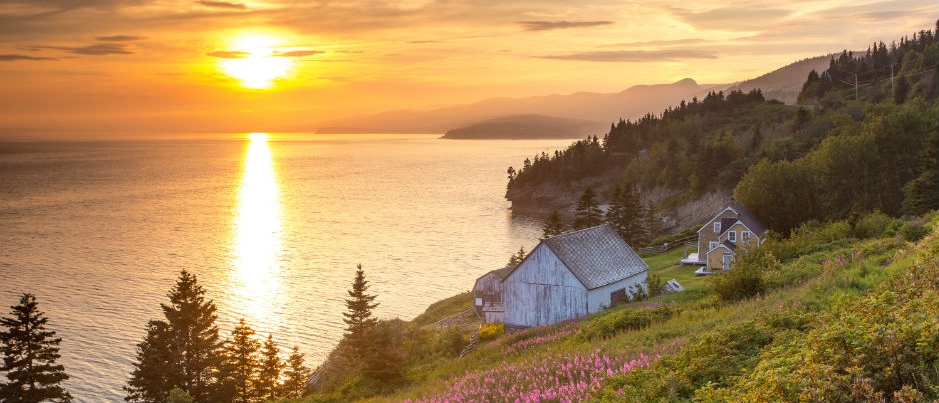
-
Forillon National Park
Mathieu Dupuis
Seaside Historic and Heritage Sites Worth Visiting
Fishing, navigation, historic battles, the fur trade… The maritime regions of Québec boast a rich history and natural heritage that are directly tied to the St. Lawrence. Many of the historic and heritage sites located in the coastal areas of these regions recount different chapters of this history. Here are a few sites to add to your itinerary!
Fishing history
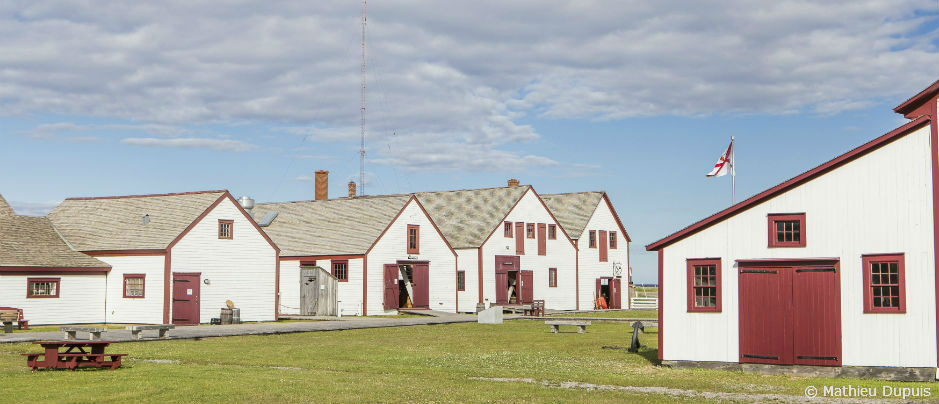
In the 18th and 19th centuries, the fishing industry in Gaspésie was dominated by two companies from Jersey Island: Charles Robin & Company and Le Boutillier Brothers. The Paspébiac Historic National Site is the perfect place to learn about this history and about the daily lives of fishermen and fishing station workers at that time. You’ll find 11 buildings on this site, including the largest wooden structure in North America. During the 19th century, Manoir Le Boutillier, in L’Anse-au-Griffon, served as an office for the company run by John Le Boutillier, an influential businessman and political figure. Visit this national historic site to find out more about this man, his company and this era.
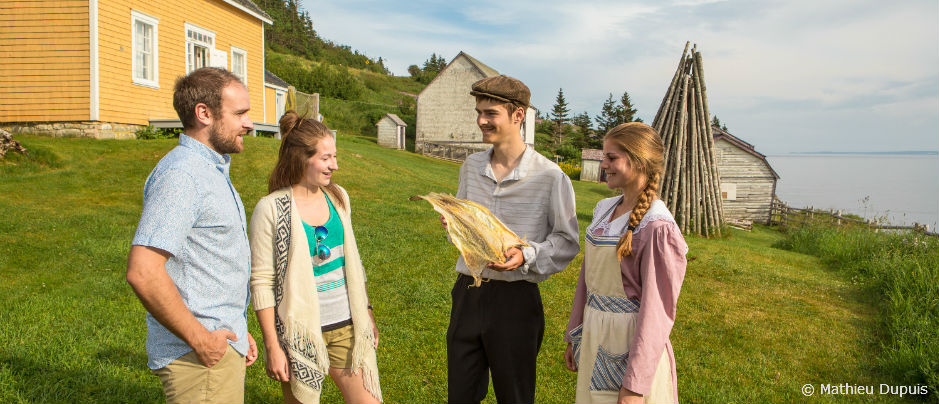
Within the boundaries of Forillon National Park is Grande-Grave, an abandoned village that once had a population of 400 in the second half of the 19th century. Most of these people worked for Jersey companies as fishermen and then dried and salted cod to make the famous “Gaspé Cure,” which was exported to Italy, Spain and the West Indies. Historical buildings, like the Blanchette house and the Hyman & Sons general store, as well as interpretive guides and exhibitions show you what daily life was like in this seaside community some 150 years ago.
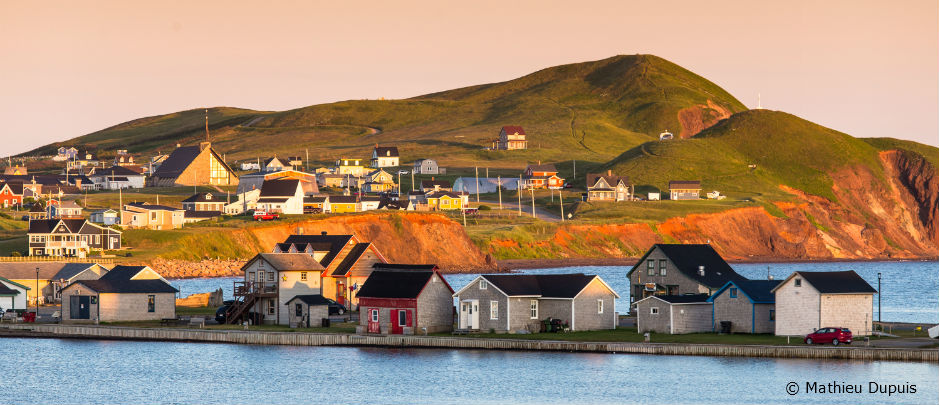
The only heritage site located in the Îles de la Madeleine, La Grave has been a fishing hub in the archipelago for a long time. Breton fishermen visited this site on Havre Aubert Island as early as the 16th century, but it was first developed once the Acadians settled here after their expulsion from Nova Scotia in 1755. The Musée de la Mer, a maritime museum located in the heart of this dynamic area, invites you on a journey through the past, with exhibitions focused on various aspects of the Islanders’ lives through time. After your visit to the museum, go for a stroll to explore the many nearby boutiques, artisans’ studios, restaurants and cafés, most of which are in old wooden buildings full of character.
To learn more about the history of smokehouses in the archipelago, you’ll want to visit Le Fumoir d’Antan on Havre aux Maisons Island. An integral part of the heritage of this region, the smokehouses on this site are the only traditional buildings still in use for this purpose on the Islands. While you’re in the Îles de la Madeleine, be sure to also plan a trip to Entry Island, the only inhabited island not connected to the rest of the archipelago by road. A visit to the Entry Island Historical Museum will give you a glimpse into the history of this community via an exhibition of farming and fishing equipment, among other things.
Lighthouses
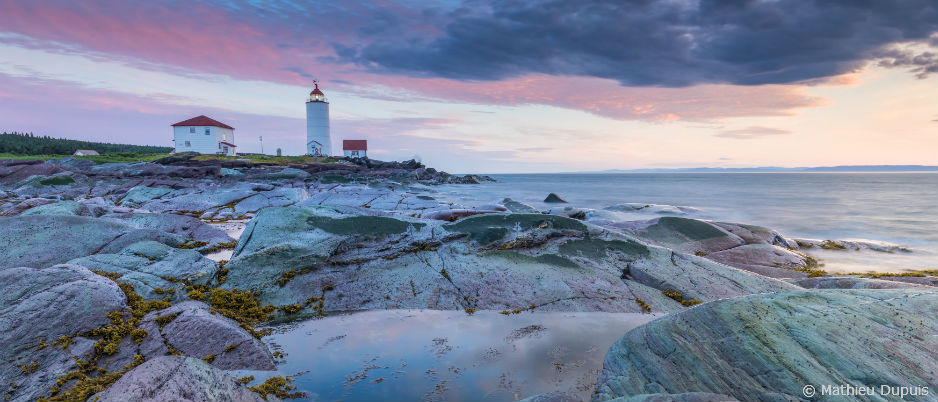
Every maritime region is home to lighthouses, which witnessed coastal navigation as well as regional history and development. You can visit about 20 lighthouses in our regions, including the Île Verte Lighthouse, which was built in 1809 and is the oldest on the St. Lawrence. Further downstream, the Pointe-au-Père Lighthouse is the second tallest in Canada, at 33 metres (108 feet) high. Go on a guided tour and climb the 128 steps to the top to enjoy a bird’s-eye view of the shoreline.
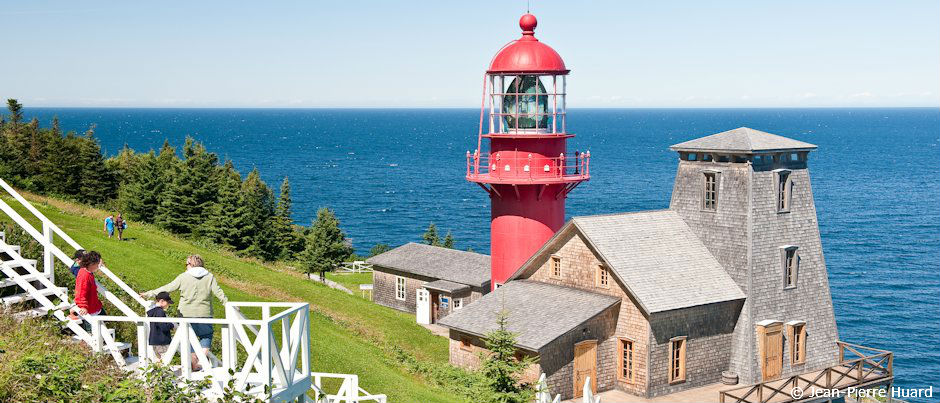
In Gaspésie, stop at Matane’s Lighthouse and Maritime Museum to learn more about this historic site as well as its preservation and lightkeepers. Then, head to the Pointe-à-la-Renommée Historic Site where you’ll find a lighthouse with a unique claim to fame: it’s the most travelled in the world! Exiled to the port of Québec City, it was brought back to its original location 20 years later. On site, you can visit the exhibitions about the lives of lightkeepers and the history of North America’s first maritime radio station, installed here in 1904.
Are you interested in visiting other lighthouses? Consult the Lighthouse Trail for a full list of the sentinels of the sea that are accessible to the public in our regions.
Historic moments
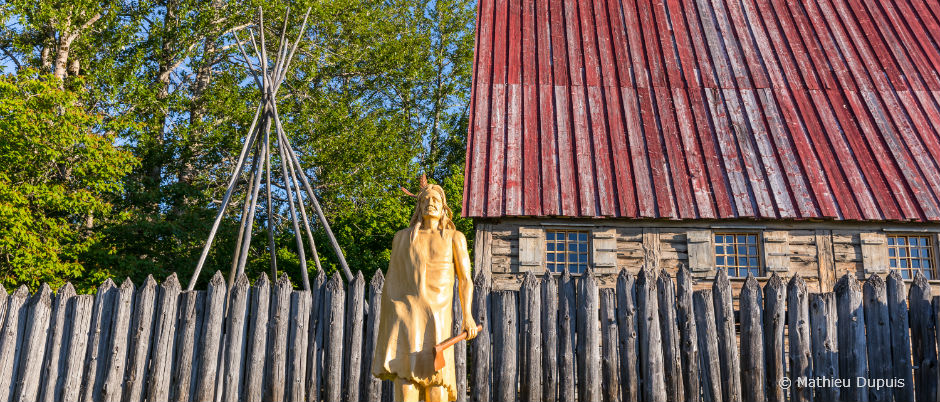
The fur trade marked the beginning of the history of New France. The first trading post was established in today’s Côte-Nord region, in Tadoussac, at the mouth of the Saguenay River, by Pierre de Chauvin de Tonnetuit in 1600. Located in a replica of the original structure built from plans drawn by Samuel de Champlain, the Chauvin Trading Post will take you back to the very beginning of the colony and highlights exchanges between First Nations people and French traders at that time.
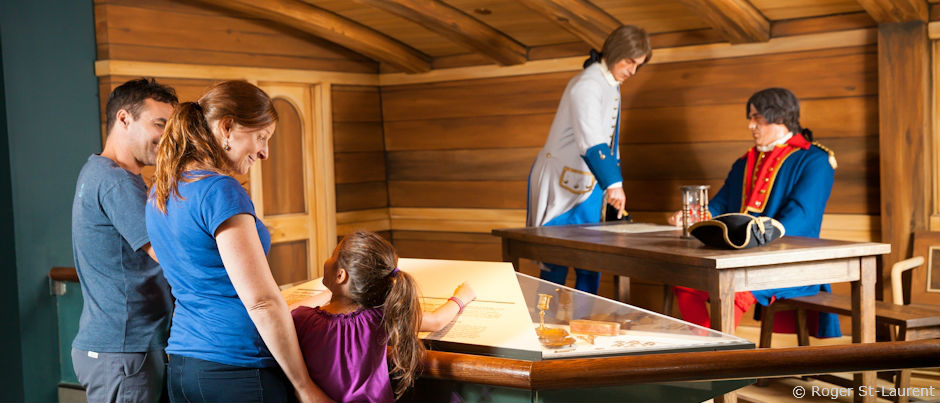
In 1760, France sent a fleet to New France in the hope of saving its colony following its defeat in Québec City in September 1759. Upon learning that British ships were coming their way, the French captain decided to head up Chaleur Bay, in the Gaspésie region, and position his troops on the banks of the Restigouche River, which is where the British caught up with them. A battle took place that sealed the fate of France in North America. This page of history is told at the Battle of the Restigouche National Historic Site, which exhibits the vestiges of an 18th-century French frigate found at the bottom of the bay right in front of the site.
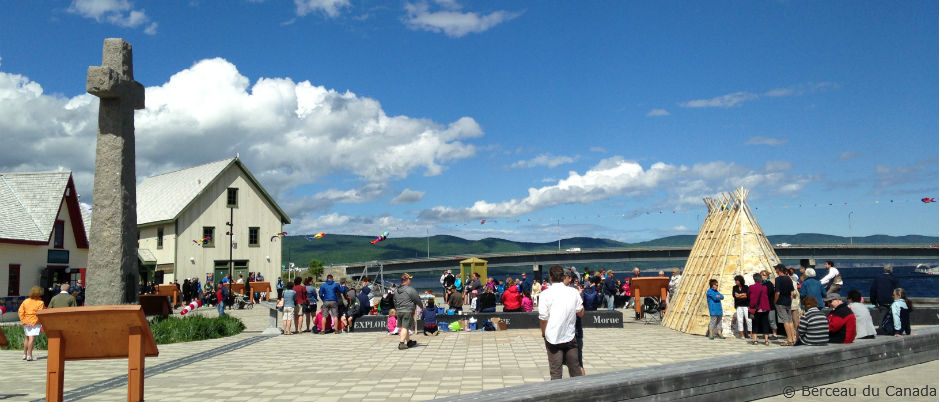
In Gaspé, the Birthplace of Canada site is a representation of the heart of the village in 1900. Each one of the reconstructed buildings includes an interpretation area and interpretive panels. From June to September, guides in period costume entertain visitors of all ages. You may also be able to watch one of the various shows happening on site throughout the summer.
Natural heritage
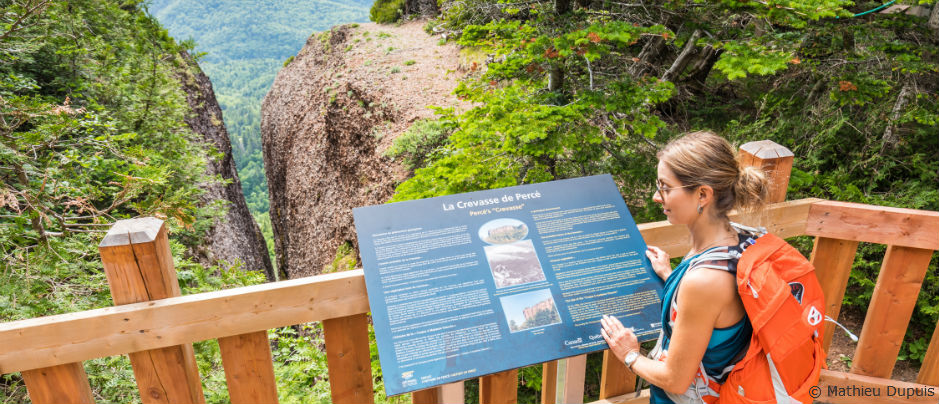
Our natural heritage is also in evidence in our regions. The Percé UNESCO Global Geopark invites you to discover 500 million years of the Earth’s history through a one-of-a-kind multimedia exhibition and 23 geosites spread out around Percé, including a crevasse, a cave, a bottomless hole and the Magic Forest. Download the map of trails and geosites (in French only) to plan your hikes in this area and explore these sites.
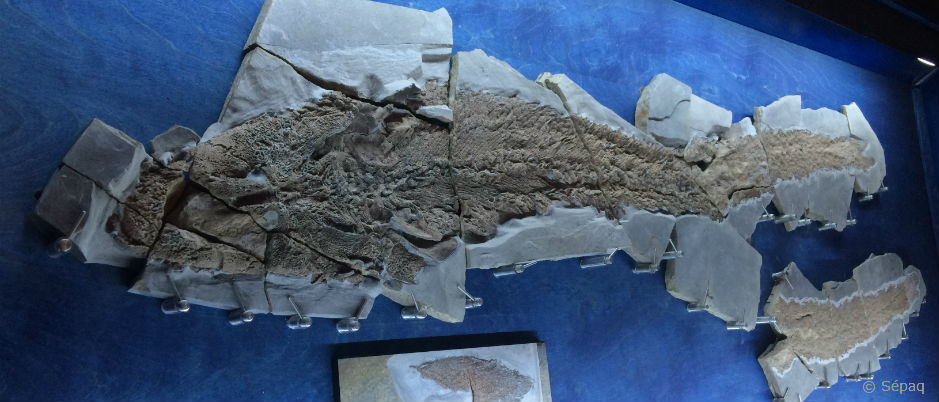
Are you interested in fossils? Then you’ll be fascinated by Parc national de Miguasha where you can see the only complete specimen of Elpistostege watsoni ever found on the planet. Learn why this 380-million-year-old fish fossil could represent the missing link between fish and tetrapods. You can also participate in a guided activity to discover the secrets of the fossil-rich cliff, which is on the prestigious UNESCO World Heritage List.
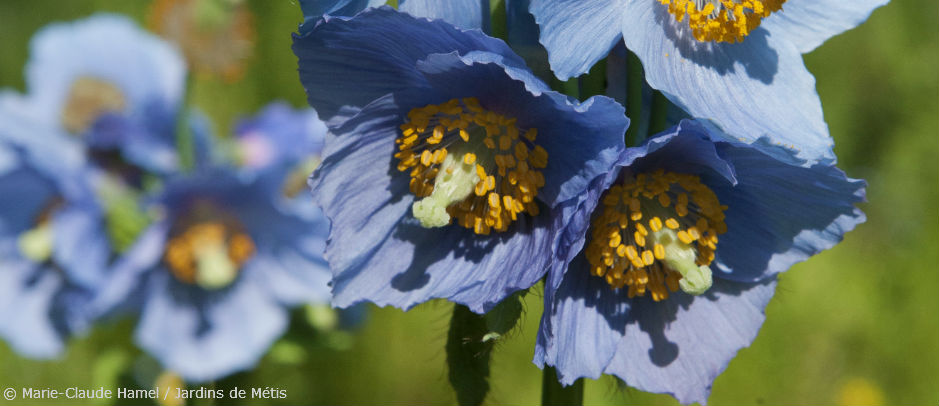
Over a dozen gardens featuring some 3000 species and varieties of plants, including the famous Himalayan blue poppy, can be found in the Reford Gardens. Created by Elsie Reford between 1926 and 1958, these are some of the largest gardens in North America. Come and admire their wonderful display of colours in a lovely setting along the St. Lawrence.
Have these sites piqued your curiosity? Keep in mind that this is only a sample of the many similar attractions you’ll find throughout our maritime regions where you can learn about our history. Take the time to explore these sites during your stay!

(0) comment